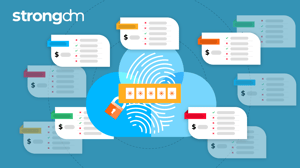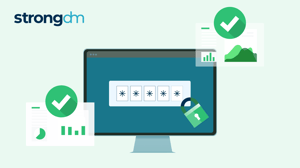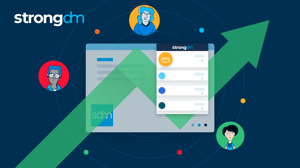
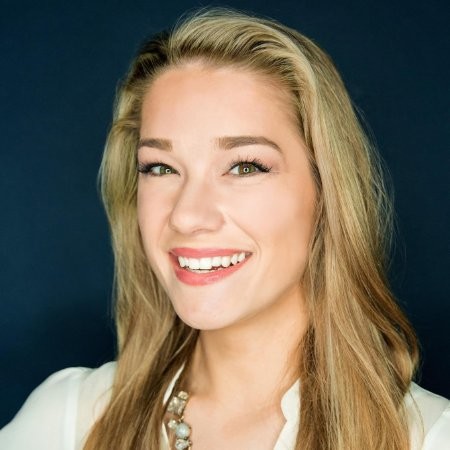
Written by
Angela DonlanLast updated on:
September 11, 2025Reading time:
Contents
Built for Security. Loved by Devs.
- Free Trial — No Credit Card Needed
- Full Access to All Features
- Trusted by the Fortune 100, early startups, and everyone in between
In our rapidly changing world, it seems like all of us are expected to do more – more tasks, more production, and better results. Technology has always been promised as our savior, the thing that is supposed to help us easily adapt to increasing workloads. But for most of us, even with all of the technological advantages offered to us, there is just simply too much to do.
Working from home certainly has its benefits. That doesn’t mean many of us aren’t still burning the candle at both ends. Massive, complex projects like digital transformations and cloud migrations have become a regular component in the lives of IT professionals, and it is causing major burnout.
Haystack analytics found that 81% of developers suffer from burnout. [1] We’re at crisis-level numbers and it’s clear that developers need support. It will help improve their productivity and peace of mind, but more importantly, it is the right thing to do. How can you help your team perform and eliminate developer burnout? It’s a tricky goal to achieve, but we have some ideas that will guide you and your technical team to better, more achievable outcomes with less stress.
Acknowledging the need to prevent software engineer burnout
As a leader, the first step to fixing a problem is to educate yourself. So, what exactly is burnout, and how do we recognize it?
The World Health Organization classifies burnout as an “occupational phenomenon conceptualized as resulting from chronic workplace stress that has not been successfully managed." Classic burnout symptoms include the following:
- Energy depletion
- Exhaustion
- Mental detachment from the job
- Negative and cynical thoughts toward the workplace
- Reduced job performance or efficiency
- Lack of motivation
- Disengagement
Why does burnout happen?
There are several reasons why your development team may experience burnout. The demands of software engineers are not always conducive to health best practices. We have to accept that programming can involve long hours sitting and staring at screens. Coding, compiling, and testing often become monotonous and repetitive.
The repetitiveness depends on how you lead your developer team to operate. Do you ask them to do the same things over and over again? How is criticism handled? Increasing workloads have ignited the haystacks of toxic programmer culture in the workplace. Bad communication, poor leadership, and bullying contribute to software engineer burnout.
On top of this, software developers must meet tight and changing deadlines. During a sprint, your developers may feel pressured to work very long hours. This causes their entire work-life balance to go off the rails.
Engineers can also become regularly frustrated when running into security hurdles. Having to manage multiple passwords (and sometimes forgetting and having to retrieve them) and being asked multiple times every day to constantly log-in to applications and other resources creates stop-gaps in the daily working schedule and prevents a developer from getting into a state of “flow.” This can be avoided by balancing the user experience with access management security.
Signs of software engineer burnout
Signs of software engineer burnout may include missing deadlines and deliverables. Other signs of burnout include increases in human error and bugs while programming.
Other signs of developer burnout include:
- Team members become withdrawn and quiet during meetings, discussions, and interviews.
- A significant drop in output, such as writing hundreds of fewer lines of code compared to previous projects.
- Software engineers are constantly late or leaving early.
- An increased frequency of callouts and other forms of absenteeism.
 More than half of developers are considering quitting their jobs due to stress and burnout.
More than half of developers are considering quitting their jobs due to stress and burnout.
A 2022 study found that 53% of developers are considering quitting their jobs. [2] Would you be able to manage the short-term turnover of more than half of your software engineers?
10 tips to prevent software engineer burnout
Whether you think your organization currently suffers from burnout is a moot point. Continuous integration and agile development practices mean that circumstances are always changing. Roles and responsibilities adapt, scopes broaden, and tech stacks evolve. That’s a lot of change, and it’s a recipe for stress.
Here are ten ways you can avoid the pitfalls of development that lead to burnout.
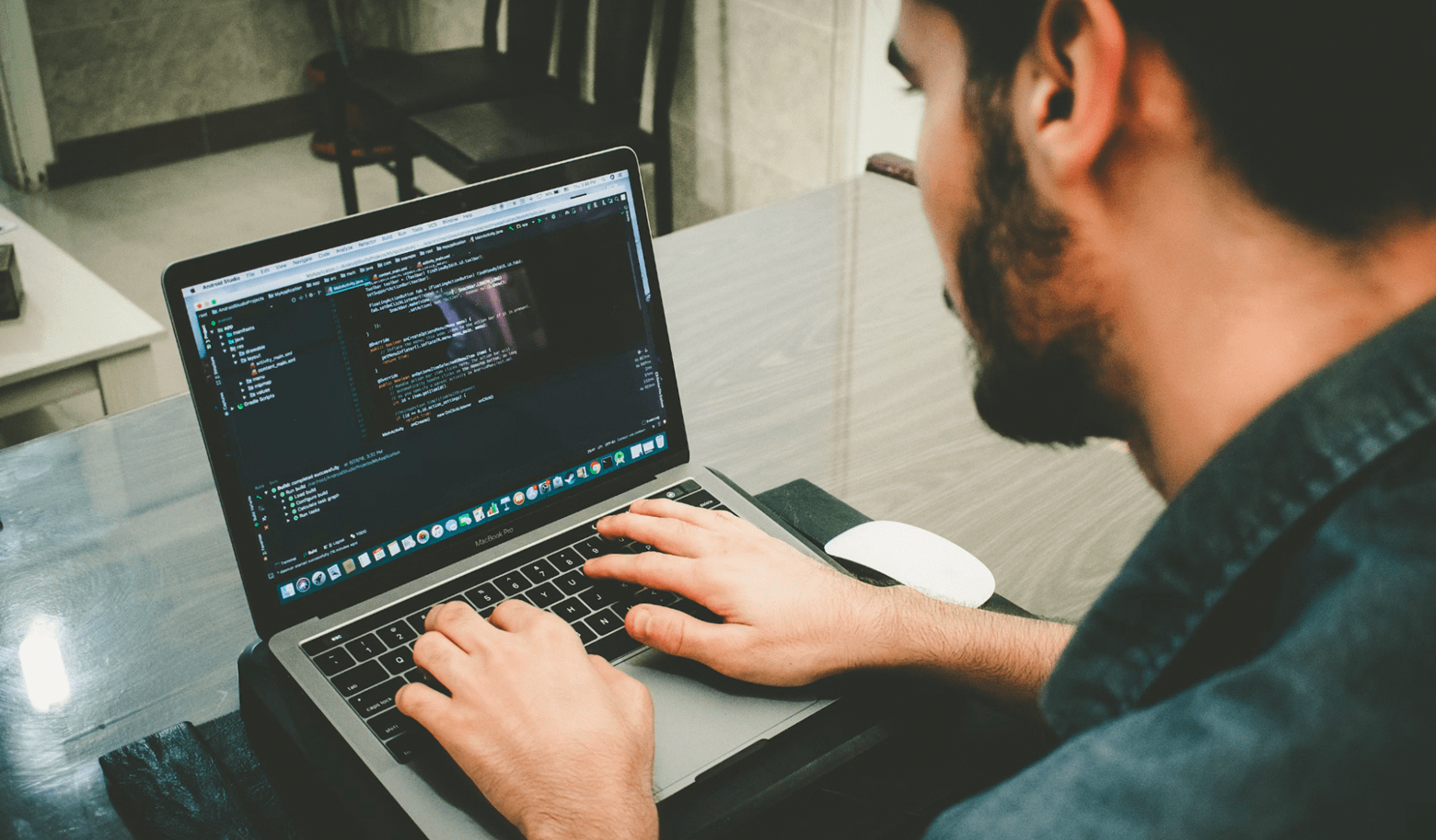
1. Clearly define project goals and individual role expectations
Nobody likes to step into a project where all the details are unknown. When employer expectations change on a whim, your team becomes confused, frustrated, and stressed. Those are all emotions that prime the burnout engine to get going.
According to a 2023 Gallup poll, employee engagement was down to 32% in 2022. The survey found that two of the biggest reasons for a lack of engagement were that only 48% of employees know what’s expected from them at work. Second, only 33% of team members felt a connection between the mission and purpose of their job. [3]
This is true across industries, whether you’re managing a software development team or working with omnichannel call center software. In both cases, clearly defined goals and expectations can drastically reduce stress and increase productivity.
Remember to follow the SMART road path when setting project and task goals:
Specific
Measurable
Achievable
Relevant
Time-bound
This will ensure everyone knows what is required of them individually and as a team. For instance, let's say you're working with omnichannel contact center software. You could build goals around reducing average handling times and increasing customer satisfaction survey scores.
2. Set manageable workloads and realistic deadlines
One of the biggest challenges in development is managing workloads effectively. You want your team to hit their deliverables and ship on time. You also don’t want to drive them like oxen plowing a field until they reach exhaustion.
 High workload is the leading cause of software engineer burnout.
High workload is the leading cause of software engineer burnout.
Survation found that increased workloads were the top reason for software engineer burnout. [4]
Avoiding burnout due to the increased demands of the workplace takes a careful approach. Team managers and leaders need to evaluate tasks and responsibilities for each project. You want to ensure everyone has an equal share of the workload.
Likewise, leadership needs to set realistic, achievable deadlines for every development project. If unexpected difficulties arise, be willing to reevaluate and alter deadlines. This will help make everyone’s lives easier. Your team will churn out code at optimal levels instead of feeling overwhelmed.
3. Ensure the team has access to the necessary tools and resources
Imagine you’re running an inbound call center. Instead of using modern call center technology, you hand your team phonebooks, a pen, and a notepad. Customers start calling in with problems, and your team does their best with what they have. The results go as expected, poorly.
You can’t expect your software engineering team to ship on time if they have to use inefficient tools. Only 38% of employees believe they have the necessary materials and equipment to do their work. [5]
Tools like access management from StrongDM streamline access management during projects. This ensures your developers have the right level of access to databases and systems without bottlenecks or hurdles. StrongDM's centralized access control also eliminates the pain of managing multiple access credentials.
This rapid and efficient type of accessibility will prevent frustration and time-wasting as well as avoid software engineer burnout that results from the constant stopping/starting routine that they typically encounter. It also reduces the cognitive load associated with remembering various login details.
4. Foster open communication and a collaborative environment
The workplace is changing. As of last year, 58% of the workforce works remotely at least part of the time. [6] Software engineers are just a small portion of the 55 million workers who have been offered remote work on a full-time basis.
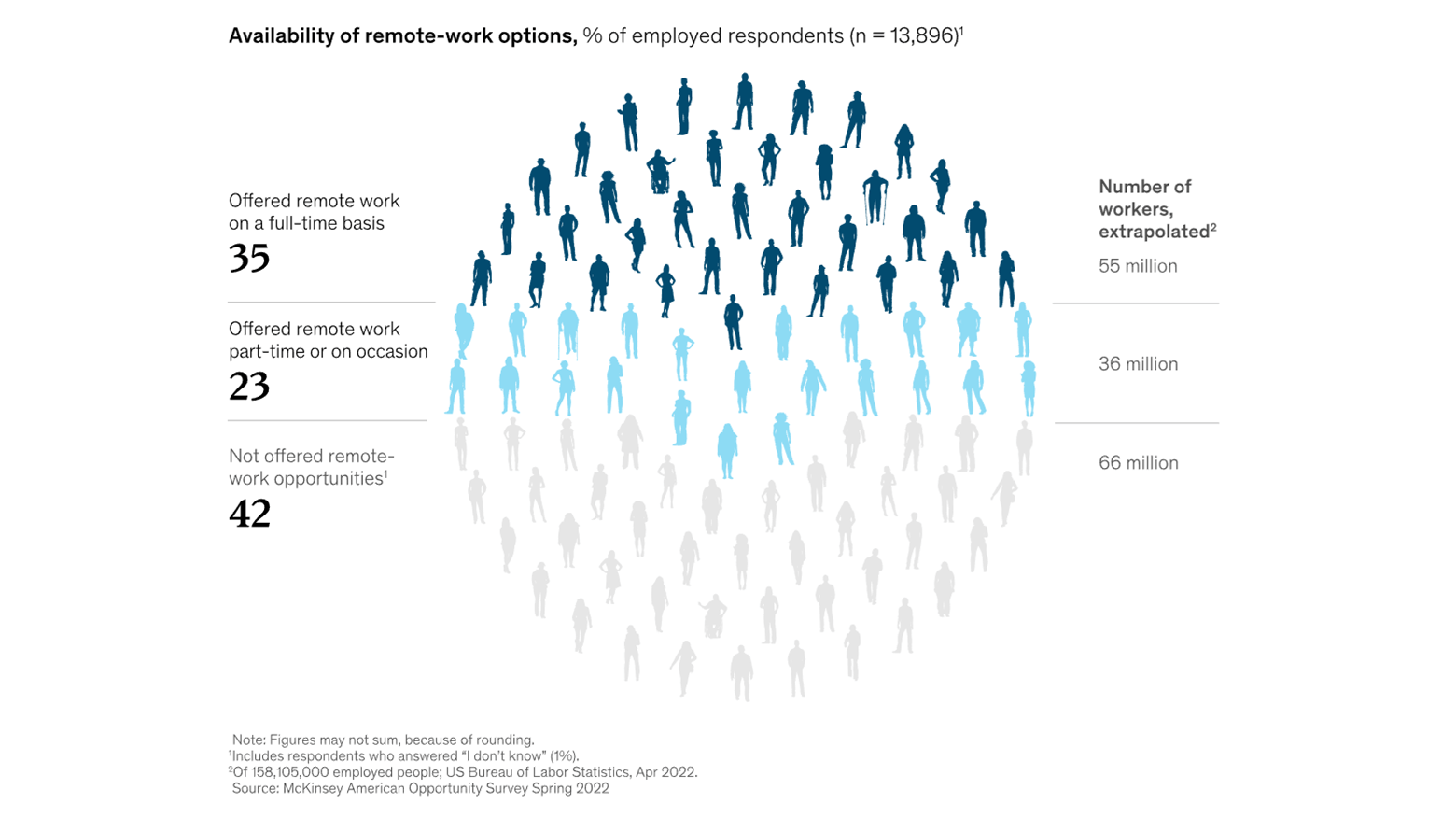 58% of U.S. employees are offered remote work at least part-time or more.
58% of U.S. employees are offered remote work at least part-time or more.
Working from home can be great for your team. It cuts down on commute times and adds layers of convenience to their workday. However, it also makes it difficult to stay connected.
A lack of communication always leads to problems. When people don’t receive feedback, they assume, often incorrectly, either the worst or the best. Either way, you can be left high and dry with poorly written code or wrongly implemented design.
Use apps like Slack or WhatsApp to create team messaging channels. You also use a VoIP (Voice over Internet Protocol) service to include video meetings and calls. Informal catch-ups will help managers stay on top of the well-being and productivity of each team member.
You can also think outside the box to enhance collaboration. Why don’t you eliminate access bottlenecks with StrongDM? It’s an easy way to foster smooth collaboration, allowing teams to work together seamlessly. They won’t have to wait around for access. With great data visibility, you promote a positive work environment and collaborative culture.
5. Provide ample training and continuous learning opportunities
Your software engineers have likely attained a computer science degree or data engineer certification. However, the learning process doesn’t end when they get hired.
Cloud applications, machine learning, and other exciting technologies will continue to progress. The tools your team uses will evolve and improve. TalentLMS found that 55% of employees need additional training to perform better in their roles. [7] Learning opportunities also contributed to their engagement and job satisfaction.
It’s up to management to provide ample opportunities for training. Many employees, including software engineers, are interested in soft skill development in areas such as:
- Leadership
- Communication and Collaboration
- Time management
- Assertiveness
- Empathy
- Diversity, Equity, and Inclusion
- Creativity and Innovation
Of course, IT professionals also want opportunities to upskill. That could be learning a new programming language, architecture, system, application, or compliance. Work with your HR managers to develop an intuitive Learning Management System (LMS). From the LMS, team leaders can tailor learning opportunities for the needs and interests of each employee.
6. Recognize and appreciate the team's hard work and achievements
Keeping your team engaged and mentally healthy is about more than the compensation they receive. People want appreciation. A recent report found feeling recognized would inspire 73% of employees to be more productive as well as reduce the desire to job hunt for 64% of employees. [8]
Managers and team leaders are always checking in to make sure projects stay on schedule. You must also remember to praise a job well done during formal and informal discussions. Research shows that recognition correlates positively with the level of employee engagement.
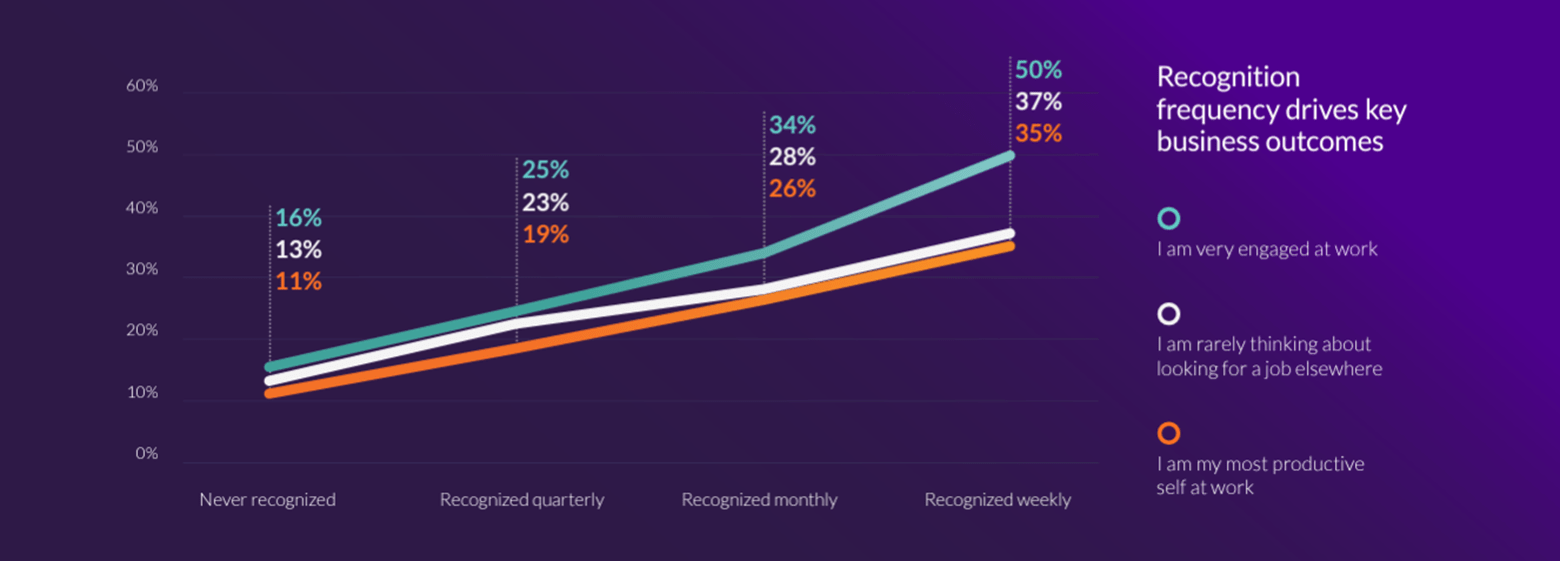 Employee engagement, satisfaction, and productivity increase with the amount of recognition they receive.
Employee engagement, satisfaction, and productivity increase with the amount of recognition they receive.
Engaged employees are often more productive and satisfied with their employer. Engagement and positive reinforcement can be powerful antidotes for those times when things will get stressful, and will ultimately do a lot to reduce software engineer burnout.
You can use team messaging apps to recognize your team's achievements and success. Schedule outings outside of the workplace to reward your team for hitting milestones and shipping on time. Team events can be elaborate occurrences or as simple as a happy hour after work on a Friday. Try to come up with team-building activities that are remote employee-inclusive. For example, call the work day early and host a video hangout.
Your software engineers rely on the best tools available. You can do the same to fight burnout by using a peer recognition platform like Kudos. These apps make it easy for team members to give “shoutouts” to one another. They also offer gamification with leaderboards and other activities.
7. Streamline interdepartmental processes for sufficient staffing
Several factors cause burnout. A recent report found that 62% of IT professionals with a high risk of burnout feel physically and emotionally drained. [9] These are symptoms not just of stress but of exhaustion from being overworked.
COVID-19 and The Great Resignation saw staff turnover reach new heights. One of the biggest challenges is for businesses to achieve adequate staffing levels. After all, there are only so many software engineers to go around. As it becomes a seller’s market, many professionals are moving on from jobs looking for greener pastures.
Your HR professionals can help you reduce turnover with a workforce planning strategy. As your recruiters bring in new talent, there is an obvious bottleneck: onboarding. Likewise, when one of your team members exits the company, they must spend time preparing for their replacement.
StrongDM simplifies IT staff onboarding and offboarding for a speedier employee handover. Our platform centralizes the handling of resources and access management. This efficiency not only saves time but also contributes to more manageable workloads. You'll reduce the friction of the onboarding and offboarding process. Shortening lag time alleviates burnout among software engineers.

8. Introduce task variety to prevent monotony and boredom
Software engineering isn’t always exciting to the outside observer. But those in the know realize the power they wield with increasingly complex technologies. Engineers and developers can achieve things that seemed impossible a decade ago. Also, software engineers have well-paid, secure jobs.
Software engineering involves a lot of typing, sitting, staring, and waiting. A recent survey by StudyFinds found that 46% of employees today suffer from boredom at least three days per week. [10]
Why is that a problem? Monotony and boredom can be mentally draining and de-motivating. Your CTO and software engineering leaders need to ensure every team member is getting a variety of tasks. You do all this work to bring in top talent; don’t you want to keep them alert and engaged with your projects?
When it comes to reporting at meetings, consider rotating who attends from each team. Where skillsets overlap, let team members change roles every week. For instance, an engineer can write code one week and evaluate code the next week.
It’s also best practice to consider building stimulation with diverse projects. Don’t fall into the trap of sticking your software engineers with the same client or application type for every assignment.
You can also encourage suggestions for improvement and side-projects from your team. Software engineers are curious and love problem-solving. When you can afford to let them pursue an idea, you may end up with a better process or implementation that boosts the business.
9. Establish clear security policies and automate security tools
Security issues create stress for more than just your DevSecOps team. A cybersecurity breach threatens the privacy of your customers and employees. It can also cost your organization millions of dollars in fines and legal fees. Cybercrime is predicted to reach $9.5 trillion by 2024. [11]
Cybersecurity incidents create more work and anxiety for your software engineers. Sprints to patch up holes in systems and open-source solutions will only crank up the pressure, especially as existing projects have to be put on hold while engineers address immediate security issues. Before you know it, you’re looking at a severe case of software engineer burnout.

StrongDM is reviewed and trusted by dozens of leaders in the software engineering industry.
The best way to extinguish the fires of burnout is to set your team up with trusted tools like StrongDM. Our platform helps companies enforce a secure and worry-free work environment. Admins get fine-grained access control with detailed audit logs. This allows your teams to monitor access activities. Admins can quickly identify trespassers and revoke access.
Use access control platforms for greater transparency. StrongDM makes it easy to prevent unauthorized access and minimize security incidents. Your IT team will thank you when the number of security issues becomes more manageable. Instead of stressing out over security risks, your developers can focus on doing what they do best: building software.
10. Maximize productive hours by providing uninterrupted access
Burnout and productivity work together in a vicious cycle. When your engineering team feels their work isn’t effective, their productivity goes down. As they feel less productive, they head towards burnout. When they feel overwhelmed and exhausted, they are less productive. When they are less productive—you get the picture!
A report found that 52% of development teams miss deadlines due to issues with accessing infrastructure. [12] Software engineers don’t want to spend their time troubleshooting access and hurdling gateways to the resources they need.
When your team is way-laid by these types of activities, rest assured their cycle times will go up. That’s less time for them to spend on areas like innovation and growth. Boost productivity by providing seamless access to databases, Kubernetes clusters, and other assets.
StrongDM makes it easy to access any resource in your infrastructure in a few clicks. You eliminate time wasted waiting for access. Your team’s work hours will be more productive and reduce developer burnout.
We build features now instead of putting out fires. We've managed to build a better system because I'm not spending time working on databases.
- Chris Gianelloni, Director of Platform Delivery of Applause (learn more)
Wrapping up
Software engineer burnout isn’t an issue that’s going away anytime soon. The best option for your organization is to take a preventative approach. Set up policies and processes that encourage your team to learn and grow. Break up the monotony of screen-sharing by varying responsibilities and with team-building activities.
You can prevent overworking your software team by using StrongDM. Our platform streamlines the onboarding and offboarding process. After Fair.com experienced 319% growth, StrongDM stepped in to provide seamless security control.
Help get new hires up to speed even quicker by following the best practices in our IT onboarding checklist. With StrongDM, you’ll make the lives of your team easier and reduce software engineer burnout.
References
- 83% of Developers Suffer From Burnout, Haystack Analytics Study Finds
- The State of Pentesting 2022
- Employee Engagement
- The State of Pentesting 2022
- Employee Engagement 2023
- Americans are embracing flexible work—and they want more of it
- The State of L&D in 2022
- 2023 State of Recognition The Gratitude Gap
- 2 in 5 of the Workers Surveyed Show a High Risk of Burnout
- Bored at work? You’re not alone: Nearly half of Americans find their job unexciting
- 2023 Official Cybercrime Report
- The Access-Productivity Gap
Next Steps
StrongDM unifies access management across databases, servers, clusters, and more—for IT, security, and DevOps teams.
- Learn how StrongDM works
- Book a personalized demo
- Start your free StrongDM trial

Categories:

About the Author
Angela Donlan, Content Manager, Angela supports the marketing team by developing creative content that helps StrongDM tell its story in creative and authentic ways. Experienced in the advertising agency space and the consulting world, Angela spent her early career years serving as a client-facing writer and project manager for brands large and small. Her specialties range from brand development and strategic campaign planning to social media execution and long-form content production. Angela obtained her Bachelor of Science in Business Administration from the University of Tulsa. She majored in Marketing and Management and completed minors in Advertising and Communications during her time at TU. To contact Angela, visit her on LinkedIn.
You May Also Like
